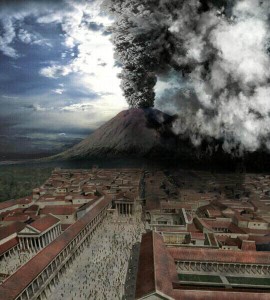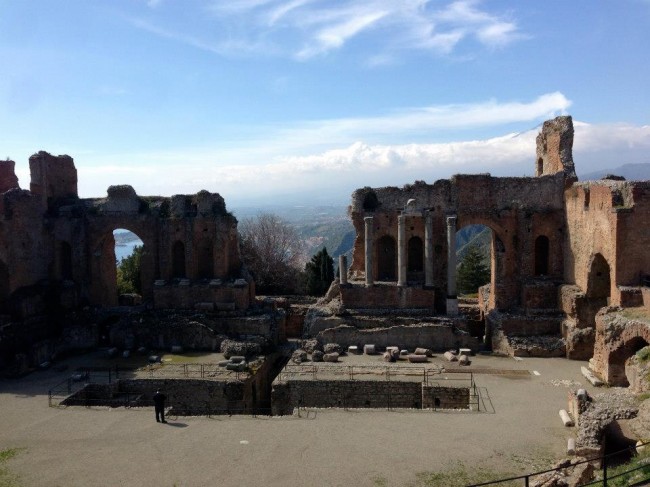Trembling before Mt. Etna and Vesuvius
While staying in the Italian city of Reggio Calabria, on the southern coast just a ferry ride away from the eastern coast of Sicily, we felt the power of the active Mt. Etna! During the middle of the night in our hotel within view of the massive volcano, we felt such intense shaking that a few pens fell of nightstands and some guests incurred serious psychological problems like being minorly annoyed.
Ok, so it wasn’t so bad. But it was Mt. Etna! The day after our traumatic experience, we took a ferry boat over to the small town of Tarentum, which has an ancient Greek colony dating back to the 7th century BCE and has also been home to D.H. Lawrence and Truman Capote in more recent history. Interestingly, it’s also where Friedrich Nietzche wrote his “Also sprach Zarathustra.” Here we had an even better view of Mt. Etna from a 5th century BCE Greek theater. Can you imagine a better backdrop for a play than this?
Coming from New York and Tennessee, I don’t have much experience with earthquakes or volcanoes, so it was quite the experience to stare off at a steaming volcano looming over the blue water. I’ve seen tornadoes bring down hail on the Vandy campus and watched hurricanes bring floods and fallen tree branches to Long Island, and now I can add volcano’s violently knocking water bottles off of my nightstand.
This past weekend I also got to climb a second volcano, Vesuvius. Mt. Vesuvius is famous for its massive eruption in 79 CE that completely covered the surrounding coastal area with volcanic ash and molten lava. The area also had its own earthquake in 62 BCE, though much more severe than the event I mentioned early. This has preserved the ancient cities of Herculaneum and, of course, Pompeii just as they were during the 1st century. In other words, they are a Classicist’s dream. Not that I don’t love visiting the ancient sites around the city of Rome that were constantly built up and changed, but seeing a city frozen in time during the Pax Romana is truly a treat. But I’ll have more about Pompeii later, this post is about volcanoes.

Vesuvius has been dormant since a 1944 event and has not had an eruption on the scale of the Pompeii event since the 17th century. Not too worried about any kind of eruption, my fellow Centristi and I climbed up to peer into the volcano’s crater. You could smell the sulfur and even see steam coming out of some vents of the crater, but I was really focused on just how powerful this mountain could be. The thousands upon thousands of tons that Vesuvius (or the volcano that preceded it) spewed out over the surrounding landscape preserved cities in time and changed the way that we understood Roman peoples of the early empire. Just standing on top of Vesuvius and admiring the vast amount of land that the volcano had the power to affect, I knew that when I come home to the USA in May, I will not be able to stay away from volcanoes for very long.

